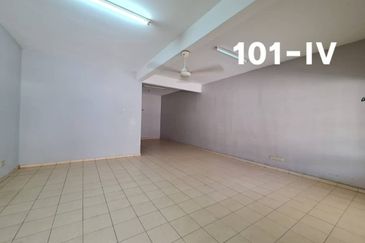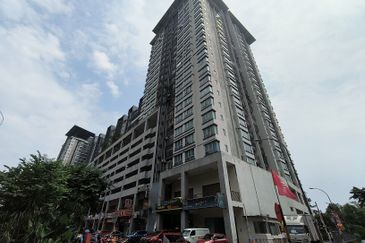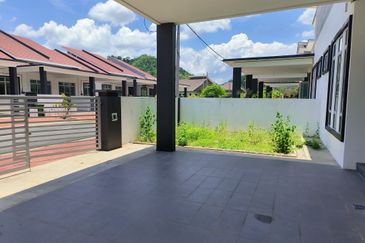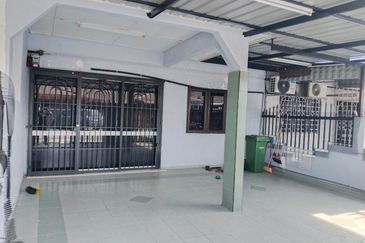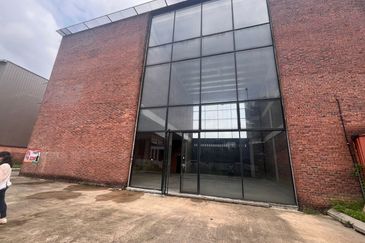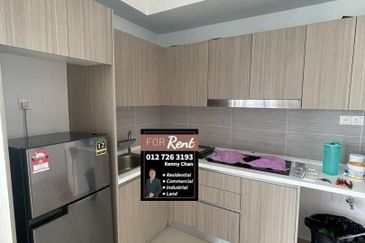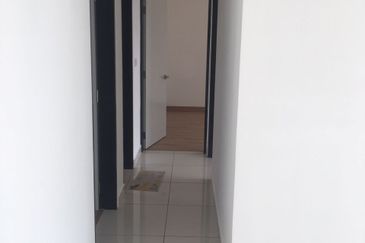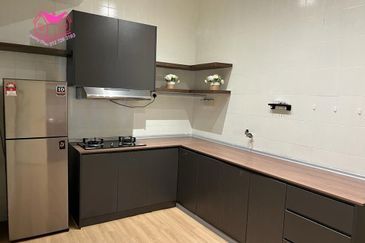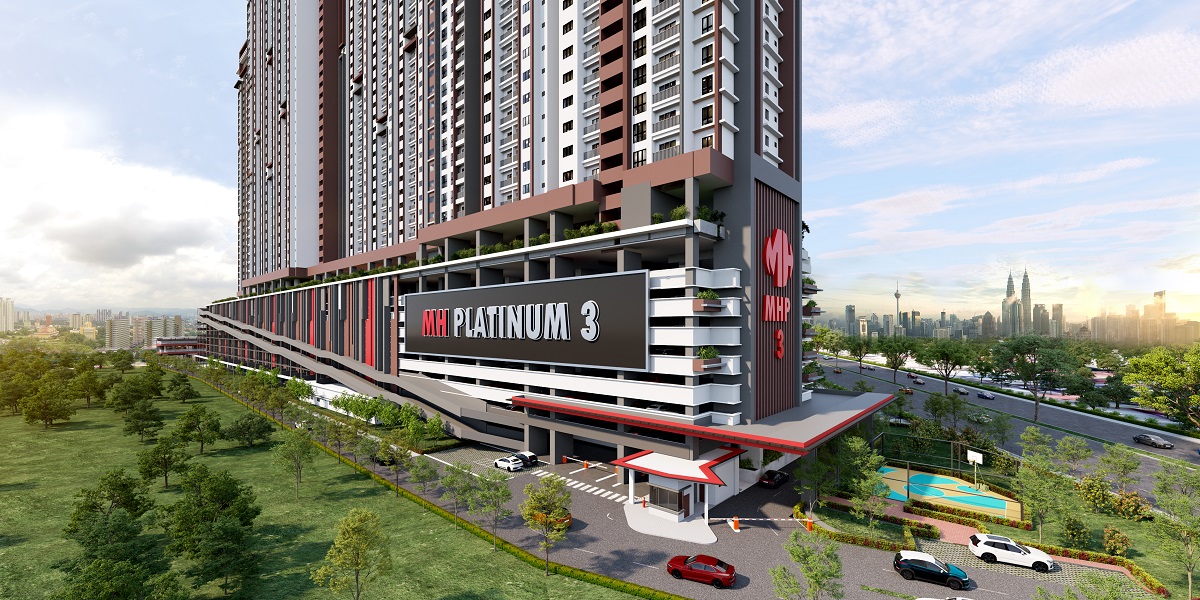Landed residential property prices in the Klang Valley have generally doubled in the past 10 years and price growth for landed homes is expected to continue.
“There is no reason to doubt that values over a 10-year horizon or slightly less will continue to rise. We have good economic growth and natural resources coupled with the commitment of the federal government to increase household income,” said Christopher Boyd, CB Richard Ellis (Malaysia) Sdn Bhd’s executive chairman during a panel discussion on the topic “Buy now or wait?” at The Edge Investment Forum on Real Estate 2012. The other panel members were Datuk Ahmad Zaini Othman, president and CEO of Malaysia Building Society Bhd and Daniel Lim, COO of property development division at Sunway Group.
Boyd, however, does not see any kind of property bubble occurring in Malaysia. “Despite the issue of affordability, I don’t see any kind of bubble. It is not a term that fits the Malaysian property market.” In fact, he said, now is a good time as any to make selective choices in the market and one may look at suburbs in the early stages of a growth spurt.
He explained that within each 10-year period, there is often three-to-four-year “growth spurts” when values spike after a relatively stable period.
For instance, the average prices in Bandar Utama for 2-storey terraced houses exhibited a gradual yet consistent increase between 2004 and 2008 followed by sharp increases over the past three years. While average growth between 2004 and 2008 was 2.8%, the average growth between 2008 and 2011 was 63%. The total growth over seven years from 2004 to 2011 was 80% or an average of 10% per year.
“If you can find an area that has not seen an average growth of 10% per annum in the last 10 years, it may indicate that the particular neighbourhood is ready for a growth spurt and you might try to jump in and catch the wave,” he said, citing new areas in parts of Rawang, Gombak, and established areas such as Taman Melawati and Setapak.
“Gombak and Setapak have been relatively cold for quite a long time and are probably well worth revisiting,” he added.
In his presentation, Boyd showed how prices of 2-storey terraced houses in Taman Melawati have risen 66% over the past seven years between 2004 and 2011. Prices had risen 28% between 2008 and 2011. In the three preceding years before that (2005 to 2008), prices had risen 22%. The average annual price growth between 2004 and 2010 was a mere 2.9%.
In 2011, however, the average price shot up and saw a 39% price hike from the previous year, bringing the total growth in prices over a seven-year period between 2004 and 2011 to 66%.
Boyd indicated the growth in Melawati last year could partly be the result of the opening of the Duta-Ulu Kelang Expressway (DUKE).
“It only came after DUKE was open. We found in our studies a similar trend of price hikes involving the opening of new LRT [light rail transit] stations. Thus, it was very fashionable in the eighties and nineties to predict that new infrastructure was going to have a very pronounced impact on capital values,” he explained. However, Boyd added that capital growth usually only occurs after an infrastructure has completed construction.
Incoming supply of residential property in the Klang Valley was trending down between 2005 and 2010 before slightly increasing again in 2011. New completions and new starts had reduced significantly from 2009 onwards compared with the years before that.
New housing starts in 2009 also reduced significantly from 41,564 units in 2008 to 24,586 units in 2009, which suggests a supply squeeze. In 2011, housing starts picked up with 34,550 units. The first quarter of 2012 saw residential incoming supply of 165,674 units with 6,180 units of new completions and 11,291 units of new starts.
As the market adjusts to new levels during a cooling-off period, prices of new housing units will not be as high as the prices indicated in the past. This shows that the market responds responsibly, said Boyd.
Other areas that Boyd believes has potential includes the eastern parts of Kuala Lumpur such as small housing estates in Setapak and Taman Bunga Raya, as well as northeast areas like Desa Setapak and Danau Kota. He said investors can still find good 2-storey terraced houses for RM500,000 that are worth looking at.
Areas like the northwest where the Damansara-Shah Alam Highway intersects with the Sungai Buloh-Kajang mass rapid transit line as well as around the Subang area are potential growth areas due to the infrastructure coming up. He also included Sentul as an area of interest due to its good connectivity via DUKE as well as its proximity to the city.
According to Boyd, Sabah is receiving a lot of investment and is particularly attractive to foreign investors as it has huge natural resources, much of which remain relatively unexploited. “Amid a strategic location, natural resources and a fairly buoyant economy, Sabah has a great future. Big boys like S P Setia and Mah Sing have already penetrated the market and are still looking for more opportunities there.
“We’re beginning to see some very fancy resort projects that have been launched recently on the market. Land is still inexpensive in Sabah. You can buy beach land there for RM10 to RM12 psf if you’re prepared to venture out of Kota Kinabalu towards Kudat,” he said.
CBRE has also been monitoring the volume of loan approvals. Although loan approvals have come down since 2006, the latest data in February this year recorded an increase which suggests the market is still very strong, said Boyd.
Approval ratings, which show banks’ appetite towards mortgage loans, fell from 62% in 2006 to 51% in 2011. However, total approvals have increased from RM33 billion in 2006 to RM95 billion in 2011. Loan application rose in February compared with January which, according to the report, is due to the combination of new Bank Negara Malaysia guidelines plus the festive season in January.
Meanwhile, in an answer to a question from the floor about commercial and retail property investments in the Klang Valley, Boyd said shopping mall space in the Klang Valley is not heading for a major oversupply while there is some concern on the future supply of shophouses and their lettability.
Looking at the rental value in terms of office space in the Klang Valley, the market currently has 27 million sq ft in the pipeline against an existing stock of 80 million sq ft and an annual takeup of 2.5 million to 3 million sq ft. This means occupancy levels will drop and any anticipated growth in the office market will be stunted over the next few years.
For industrial space, Boyd said it seems to be getting more vibrant.
“You’ll see some developers producing semi-detached or terraced products in quite large numbers and values seem to be between RM225 and RM300 psf. Sales have been good for smaller units but not so much for larger units such as those between 25,000 and 30,000 sq ft,” he said. Boyd added that investors should look at areas beyond Shah Alam and towards Klang as industrial products are doing well in those areas.
This article appeared in City & Country, the property pullout of The Edge Malaysia, Issue 909, May 7-13, 2012
TOP PICKS BY EDGEPROP

Sungai Kapar Indah Industrial Zone
Kapar, Selangor

The Fennel @ Sentul East
Sentul, Kuala Lumpur

Pangsapuri Akasia, Bandar Botanic
Bandar Botanic/Bandar Bukit Tinggi, Selangor

Southbank Residence
Jalan Klang Lama (Old Klang Road), Kuala Lumpur

Bandar Bukit Tinggi
Bandar Botanic/Bandar Bukit Tinggi, Selangor
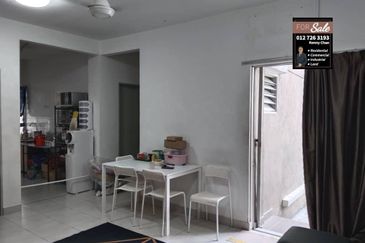
Pangsapuri Akasia, Bandar Botanic
Bandar Botanic/Bandar Bukit Tinggi, Selangor
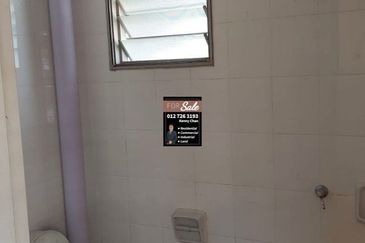
Pangsapuri Akasia, Bandar Botanic
Bandar Botanic/Bandar Bukit Tinggi, Selangor

